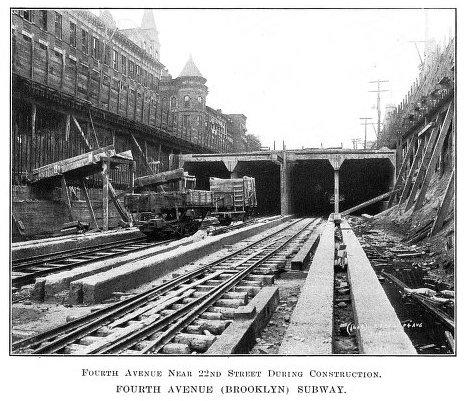Revitalizing New York City’s Transit: Progress, Innovations, and Future Directions
Over the last 11 months, New York City’s public transportation system has experienced a wave of transformative initiatives designed to elevate the daily commute for millions of subway and bus passengers. These efforts encompass comprehensive infrastructure enhancements, strengthened safety protocols, and cutting-edge technological advancements, all contributing to the modernization of one of the globe’s most extensive transit networks. This article delves into the pivotal developments, ongoing challenges, and strategic recommendations shaping the Metropolitan Transportation Authority’s (MTA) mission to revamp and optimize transit services throughout the city.
Boosting Transit Reliability Through Strategic Infrastructure Investments
Significant capital has been directed toward upgrading essential components of New York City’s subway and bus systems, yielding measurable improvements in service dependability. Key undertakings include the overhaul of outdated track segments, the integration of sophisticated signaling systems, and the enhancement of electrical power infrastructure. These targeted projects have collectively curtailed delays, bolstered operational stability, and better positioned the transit network to handle increasing passenger volumes.
Highlighted accomplishments from this period include:
- Advanced Signal Technology Deployment: Implementation of automated signaling on approximately 60% of principal subway lines, facilitating a 15% boost in train frequency during rush hours.
- Track Rehabilitation Efforts: Renewal of over 10 miles of deteriorated tracks, contributing to a 20% reduction in maintenance-related service interruptions.
- Power Supply Enhancements: Upgrading electrical substations to ensure more consistent energy delivery, thereby decreasing outage-induced delays.
| Project Area | Impact | Progress Status |
|---|---|---|
| Signal System Upgrade | +15% train frequency | 60% Complete |
| Track Replacement | -20% delays | In Progress |
| Electrical Substation Modernization | Fewer outages | 50% Complete |
Strengthening Safety Protocols to Rebuild Rider Trust
In the past year, the MTA has intensified efforts to enhance security across subway stations and bus routes, resulting in a safer transit environment. Increased deployment of transit police officers and ambassadors has played a crucial role in deterring criminal activity and offering immediate support to passengers. Complementing these personnel measures, the installation of high-definition surveillance cameras and the establishment of real-time monitoring centers have improved the system’s ability to swiftly detect and respond to safety incidents.
Key safety initiatives include:
- Assignment of 200 additional transit officers to high-traffic stations.
- Installation of over 1,000 cutting-edge security cameras throughout the network.
- Expansion of emergency call box availability for rapid communication.
- Enhanced station lighting and cleanliness, particularly during nighttime hours, to foster a more comfortable atmosphere.
These measures have contributed to a 25% rise in riders’ perception of safety, according to recent surveys. By leveraging data-driven deployment and fostering community partnerships, the MTA is cultivating a transit system that feels secure and welcoming for all New Yorkers.
Advancing Accessibility and Inclusivity for Every Commuter
New accessibility-focused innovations have significantly improved the transit experience for individuals with disabilities and other mobility challenges. The introduction of tactile guidance systems, real-time audio announcements, and enhanced visual information displays across subway stations and buses has made navigation more intuitive. Additionally, station renovations featuring ramps, wider turnstiles, and the deployment of low-floor buses have removed physical barriers, promoting dignity and ease of movement for all passengers.
Technological enhancements also empower riders through customizable mobile app features, such as vibration alerts and simplified route maps tailored to individual needs. Below is an overview of key accessibility advancements implemented recently:
| Innovation | Benefit | Deployment Scope |
|---|---|---|
| Audio-Tactile Navigation Beacons | Assists visually impaired commuters | 42 Subway Stations |
| Low-Floor Bus Fleet | Facilitates boarding for wheelchairs and strollers | All Bus Routes |
| Customizable Mobile App Alerts | Personalized travel notifications | Citywide |
Policy Strategies to Sustain Progress and Broaden Impact
To maintain and build upon recent transit improvements, it is imperative to prioritize sustained funding and supportive legislation. Expanding dedicated bus lanes can significantly cut commute times by 15-20%, while continued investment in signal modernization will further enhance train frequency and reliability. Embracing environmental sustainability through the transition to electric buses and the integration of renewable energy sources within subway infrastructure aligns transit development with New York City’s climate action goals.
Engaging communities remains a cornerstone of effective transit planning. Establishing regular feedback mechanisms and collaborating with local organizations ensures that service enhancements reflect the diverse needs of riders across all boroughs. Additionally, policies encouraging flexible work hours can alleviate peak congestion, and fostering partnerships among transit agencies, urban planners, and technology innovators will drive holistic improvements. The table below summarizes key policy priorities and their anticipated benefits:
| Policy Initiative | Projected Outcome |
|---|---|
| Expansion of Dedicated Bus Lanes | 15-20% reduction in commute times |
| Continued Signal System Upgrades | Increased train frequency and reliability |
| Transition to Electric Bus Fleet | Lower greenhouse gas emissions |
| Community Engagement Programs | Customized service improvements |
Final Thoughts
As New York City reflects on nearly a year of substantial advancements in its subway and bus systems, the progress achieved highlights a steadfast dedication to enhancing transit reliability, safety, and inclusivity. While obstacles persist, the ongoing modernization of infrastructure and services signals a city committed to evolving its public transportation to meet the demands of today and tomorrow. Continued investment, innovative policymaking, and active community involvement will be vital to sustaining this positive trajectory and ensuring that the transit network remains a vital resource for all New Yorkers.













